BMW i4 vs Kia EV3 – Which one offers the better deal?
Everyday use, family trips or long-distance drives – here’s where the differences show.
Discover whether BMW i4 or Kia EV3 fits your lifestyle better.
Costs and Efficiency:
Price and efficiency are often the first things buyers look at. Here it becomes clear which model has the long-term edge – whether at the pump, the plug, or in purchase price.
Kia EV3 has a clearly advantage in terms of price – it starts at 30800 £, while the BMW i4 costs 49400 £. That’s a price difference of around 18523 £.
In terms of energy consumption, the advantage goes to the BMW i4: with 14.70 kWh per 100 km, it’s minimal more efficient than the Kia EV3 with 14.90 kWh. That’s a difference of about 0.20 kWh.
As for range, the BMW i4 performs barely noticeable better – achieving up to 613 km, about 8 km more than the Kia EV3.
Engine and Performance:
Power, torque and acceleration say a lot about how a car feels on the road. This is where you see which model delivers more driving dynamics.
When it comes to engine power, the BMW i4 has a significantly edge – offering 601 HP compared to 204 HP. That’s roughly 397 HP more horsepower.
In acceleration from 0 to 100 km/h, the BMW i4 is significantly quicker – completing the sprint in 3.70 s, while the Kia EV3 takes 7.50 s. That’s about 3.80 s faster.
In terms of top speed, the BMW i4 performs clearly perceptible better – reaching 225 km/h, while the Kia EV3 tops out at 170 km/h. The difference is around 55 km/h.
There’s also a difference in torque: BMW i4 pulls significantly stronger with 795 Nm compared to 283 Nm. That’s about 512 Nm difference.
Space and Everyday Use:
Beyond pure performance, interior space and usability matter most in daily life. This is where you see which car is more practical and versatile.
Both vehicles offer seating for 5 people.
In curb weight, Kia EV3 is somewhat lighter – 1800 kg compared to 2070 kg. The difference is around 270 kg.
In terms of boot space, the BMW i4 offers barely noticeable more room – 470 L compared to 460 L. That’s a difference of about 10 L.
In maximum load capacity, the BMW i4 performs minimal better – up to 1290 L, which is about 39 L more than the Kia EV3.
When it comes to payload, BMW i4 hardly perceptible takes the win – 480 kg compared to 470 kg. That’s a difference of about 10 kg.
Who comes out on top?
Overall, the BMW i4 shows itself to be outperforms in nearly all aspects and secures the title of DriveDuel Champion.
It convinces with the more balanced overall package and proves to be the more versatile choice for everyday use.

BMW i4
BMW i4
The BMW i4 beautifully merges the dynamism of a saloon with the efficiency of an electric vehicle, offering a truly exhilarating driving experience. Its design seamlessly blends elegance and athleticism, highlighting BMW's dedication to both aesthetics and performance. Inside, the i4 boasts a high-tech cockpit that harmonises luxury with intuitive technology, allowing drivers to stay connected while on the move.
details @ press.bmwgroup.com
@ press.bmwgroup.com
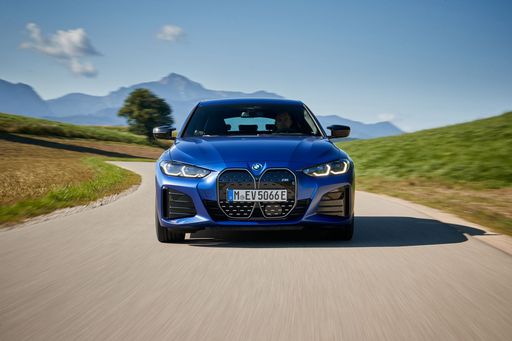 @ press.bmwgroup.com
@ press.bmwgroup.com
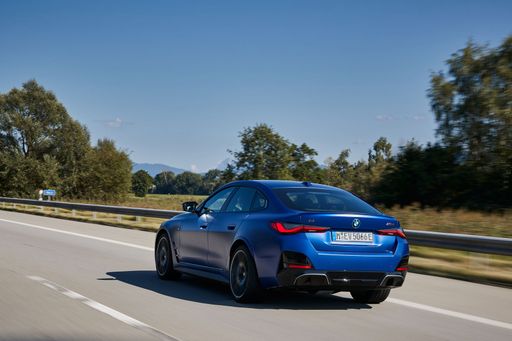 @ press.bmwgroup.com
@ press.bmwgroup.com
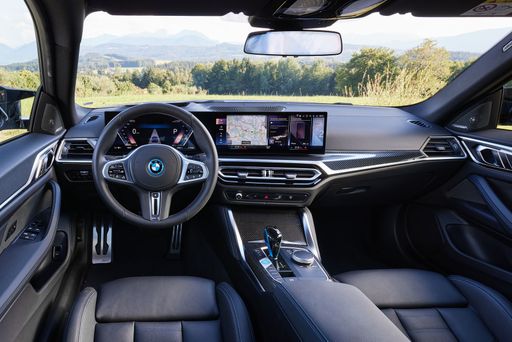 @ press.bmwgroup.com
@ press.bmwgroup.com
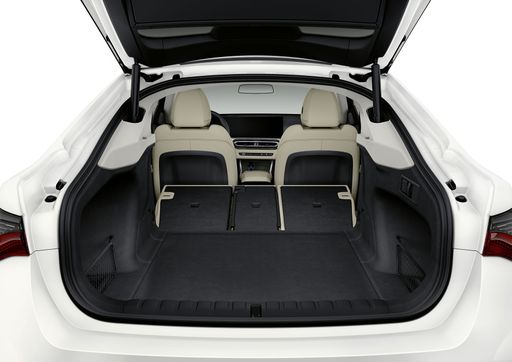 @ press.bmwgroup.com
@ press.bmwgroup.com
Kia EV3
The Kia EV3 is a testament to innovative design and sustainable driving, featuring a sleek exterior that melds form with function. Inside, the cabin offers a harmonious blend of modern technology and comfort, making every journey enjoyable for both driver and passengers. With its impressive range and eco-friendly credentials, the EV3 positions itself as a competitive player in the evolving landscape of electric vehicles.
details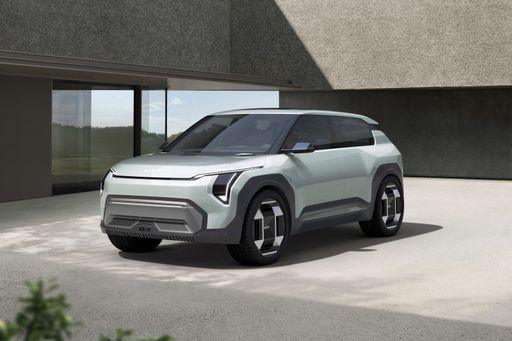 @ kiamedia.com
@ kiamedia.com
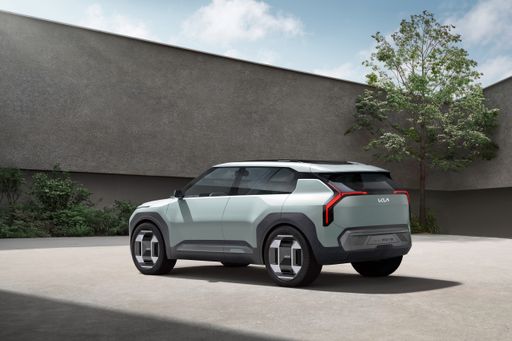 @ kiamedia.com
@ kiamedia.com
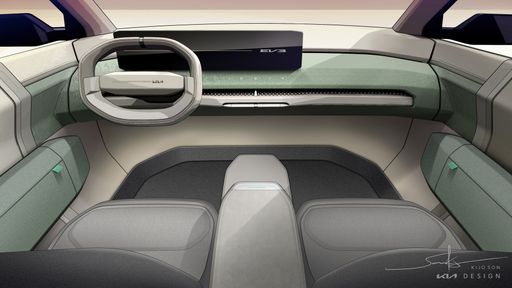 @ kiamedia.com
@ kiamedia.com

|

|
|
|
|
Costs and Consumption |
|
|---|---|
|
Price
49400 - 62500 £
|
Price
30800 - 41700 £
|
|
Consumption L/100km
-
|
Consumption L/100km
-
|
|
Consumption kWh/100km
14.7 - 16.7 kWh
|
Consumption kWh/100km
14.9 - 16.2 kWh
|
|
Electric Range
514 - 613 km
|
Electric Range
436 - 605 km
|
|
Battery Capacity
67.1 - 81.3 kWh
|
Battery Capacity
58.3 - 81.4 kWh
|
|
co2
0 g/km
|
co2
0 g/km
|
|
Fuel tank capacity
-
|
Fuel tank capacity
-
|
Dimensions and Body |
|
|---|---|
|
Body Type
Hatchback
|
Body Type
SUV
|
|
Seats
5
|
Seats
5
|
|
Doors
5
|
Doors
5
|
|
Curb weight
2070 - 2285 kg
|
Curb weight
1800 - 1885 kg
|
|
Trunk capacity
470 L
|
Trunk capacity
460 L
|
|
Length
4783 mm
|
Length
4300 - 4310 mm
|
|
Width
1852 mm
|
Width
1850 mm
|
|
Height
1448 mm
|
Height
1560 - 1570 mm
|
|
Max trunk capacity
1290 L
|
Max trunk capacity
1251 L
|
|
Payload
445 - 480 kg
|
Payload
470 kg
|
Engine and Performance |
|
|---|---|
|
Engine Type
Electric
|
Engine Type
Electric
|
|
Transmission
Automatic
|
Transmission
Automatic
|
|
Transmission Detail
Reduction Gearbox
|
Transmission Detail
Reduction Gearbox
|
|
Drive Type
Rear-Wheel Drive, All-Wheel Drive
|
Drive Type
Front-Wheel Drive
|
|
Power HP
286 - 601 HP
|
Power HP
204 HP
|
|
Acceleration 0-100km/h
3.7 - 6 s
|
Acceleration 0-100km/h
7.5 - 7.9 s
|
|
Max Speed
190 - 225 km/h
|
Max Speed
170 km/h
|
|
Torque
400 - 795 Nm
|
Torque
283 Nm
|
|
Number of Cylinders
-
|
Number of Cylinders
-
|
|
Power kW
210 - 442 kW
|
Power kW
150 kW
|
|
Engine capacity
-
|
Engine capacity
-
|
General |
|
|---|---|
|
Model Year
2025
|
Model Year
2024
|
|
CO2 Efficiency Class
A
|
CO2 Efficiency Class
A
|
|
Brand
BMW
|
Brand
Kia
|
What drivetrain options does the BMW i4 have?
The BMW i4 is available as Rear-Wheel Drive or All-Wheel Drive.
The prices and data displayed are estimates based on German list prices and may vary by country. This information is not legally binding.
